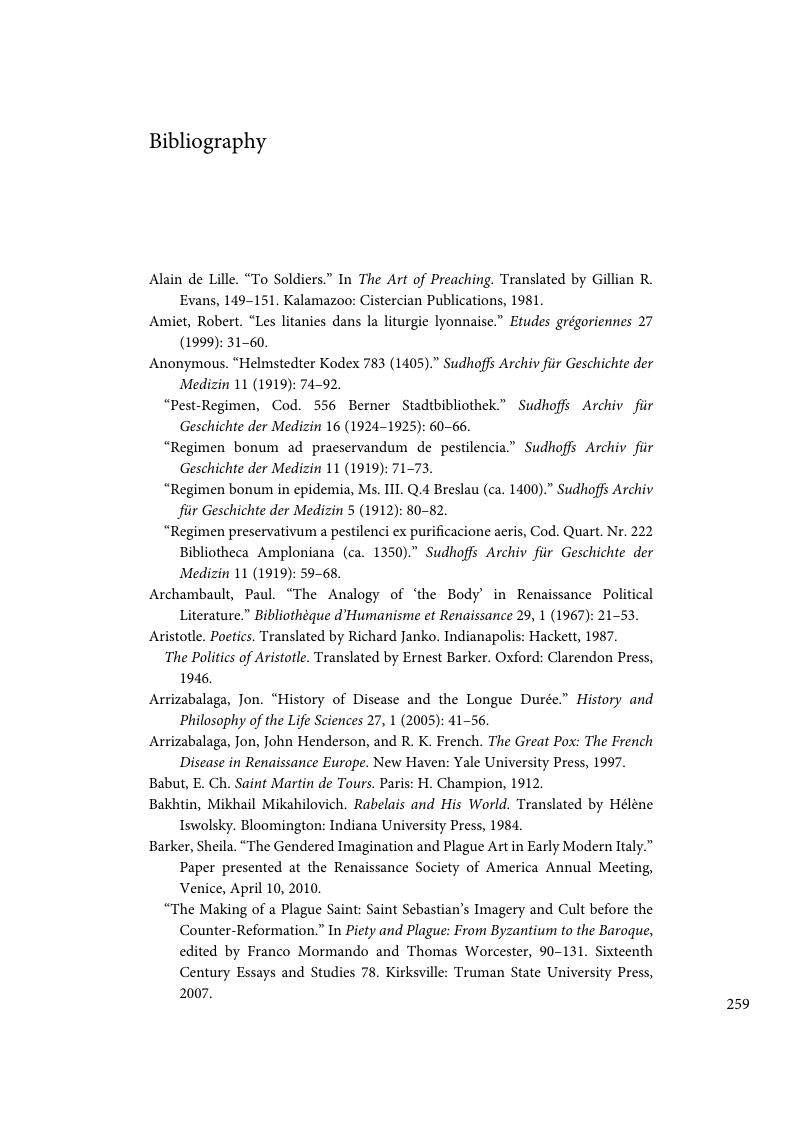Book contents
- Plague and Music in the Renaissance
- Plague and Music in the Renaissance
- Copyright page
- Contents
- Illustrations
- Acknowledgments
- Introduction
- 1 Medicine for the Body and the Soul
- 2 Sympathetic Resonance, Sympathetic Contagion
- 3 Devotions on the Street and in the Home
- 4 The Cult of St. Sebastian
- 5 Madrigals, Mithridates, and the Plague of Milan
- Epilogue
- Book part
- Bibliography
- Index
- References
Bibliography
Published online by Cambridge University Press: 08 June 2017
- Plague and Music in the Renaissance
- Plague and Music in the Renaissance
- Copyright page
- Contents
- Illustrations
- Acknowledgments
- Introduction
- 1 Medicine for the Body and the Soul
- 2 Sympathetic Resonance, Sympathetic Contagion
- 3 Devotions on the Street and in the Home
- 4 The Cult of St. Sebastian
- 5 Madrigals, Mithridates, and the Plague of Milan
- Epilogue
- Book part
- Bibliography
- Index
- References
Summary

- Type
- Chapter
- Information
- Plague and Music in the Renaissance , pp. 259 - 277Publisher: Cambridge University PressPrint publication year: 2017



